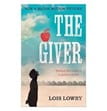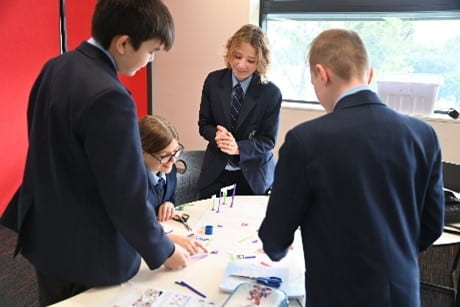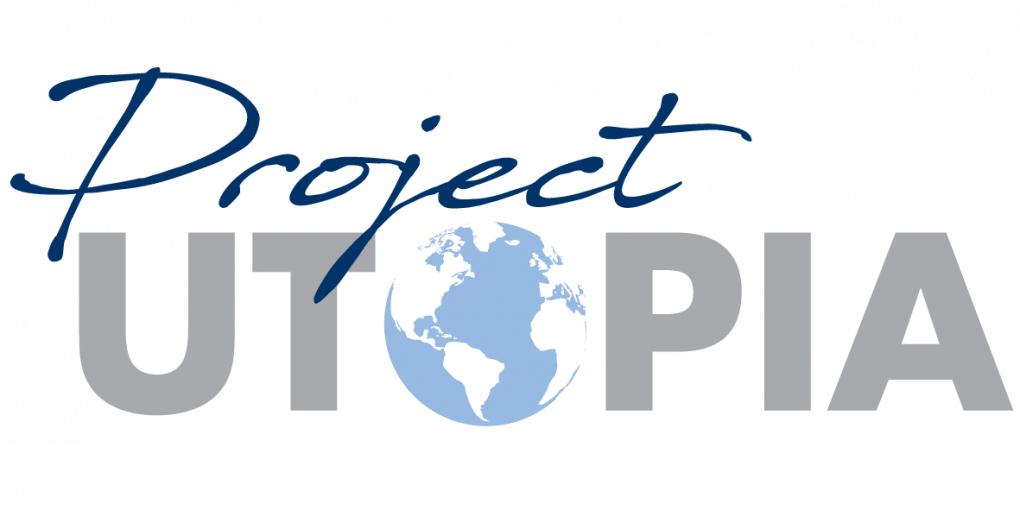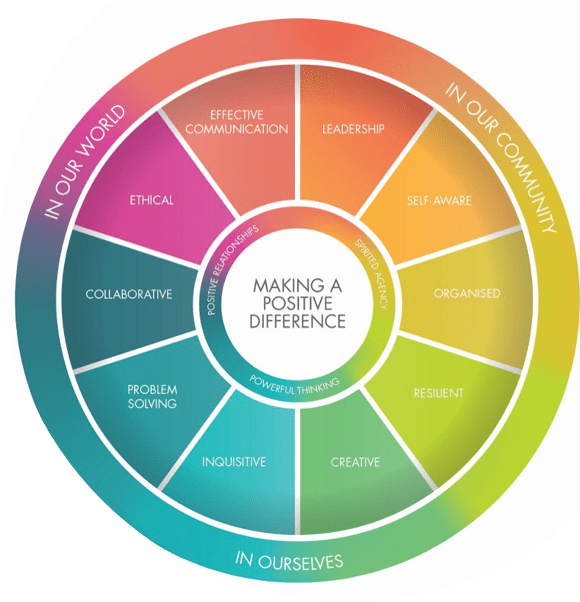“Utopia Project” (PART A)
“YOO-TOH-PEE-A”
Definition: A utopia is an imagined community or community that possesses highly desirable or nearly perfect qualities for its citizens
Based on your learning from:
- Reading “The Giver”
- English activities on the elements of a “Utopian” community
- Listening to other students speak of their research on Utopian societies
- Your own individual research and learning
YOUR TASK:
To design your own “Utopian” community applying liveability factors and your research.
STEP ONE:
Complete the plan for your community.
| Part 1: Geography | |
| What is the name of your Utopian community? | |
| Where on Earth is it located? Why is it located there? | |
| How many people live within your community? | |
| Part 2: Climate | Climate is one of the most important factors affecting the liveability of a place. |
| Describe the climate. | |
| How does the climate affect different aspects of livability in your community? | |
| Part 3: Healthcare & Education | In general, people living in the world’s most liveable cities have access to good health care services. They also have access to a range of schools and other education facilities |
| How are people cared for in your Utopia? | |
| What sort of education facilities are available? | |
| Describe schooling in your community. | |
| What do students learn about? | |
| Part 4: Safety & Stability | Safety and stability are two of the most important factors linked to the liveability of a place. More than most other things, people value feeling safe and stable in their homes. |
| How is my community going to be safe? | |
| How is my community going to be stable? | |
| Part 5: Environmental Quality | Environmental quality can refer to a number of characteristics relating to the natural or built environment |
| How will your community manage environmental quality? | |
| Part 6: Infrastructure | The availability of services and facilities help make a place more liveable |
| How will community members get around in your Utopia? | |
| What sorts of services will be available? | |
| Part 7: Community (How will you build a community) | This is linked to subjective factors of liveability – personal likes & dislikes; feelings of connection to others. They are also linked to beliefs, traditions and spiritual connections to places. |
| What holidays and celebrations will be celebrated in your community? | |
| What, (if any) spiritual beliefs are included in your community? Why are these important/not important? | |
| What do members of your community do for fun? |
STEP TWO:
Imagine you were designing and planning a “perfect society” as the Elders did in The Giver and from what you have learned in Humanities.
Incorporating the factors of liveability, what questions could you create to help guide your research to find the most innovative programs from around the world.
- Education
- Health
- Safety & Stability
- Infrastructure
- Environmental Quality/Sustainability
- Climate
- Subjective Factors such as building community
| OVERALL QUESTION: |
| Sub questions: |
STEP THREE:
Draft your community in a map on A3 paper. This design must be based on (and including) the decisions you have made above. Remember to include the objective and subjective factors of liveability.
Requirements:
- Use the entire piece of paper
- Use colour
- Organised and neat
- Accurate to your table in STEP ONE.
- Ensure you include a key to your “Utopia” on your draft map
STEP FOUR:
Create your “Utopia”. This can be done by using Cospaces, Lego, Tinkercad, 3D Models, SketchUp, Minecraft, Prezi or some other physical or technological tool.
Please ensure you have checked with your teacher prior to beginning your physical “Utopia” to ensure it is appropriate.
STEP FIVE:
Using recording software – record a “flyover” of your “Utopia” explaining the liveability factors included and explaining your choices
Students will create their own version of Utopia either as a physical model or online. These will be shared with others on Grandparents and students will be offered the opportunity to participate in the Game Changer Awards 2021.
The Action/Time Plan outlines what you need to complete as part of your project to determine where you are up to.
Project Utopia Reflection

To introduce our Project Utopia, we started with The Giver, reading about how Jonas’s world is a utopia in the view of the elders. Jonas’s community believed it was a perfect world but Jonas and the Giver were the only people that knew it wasn’t because there was no freedom. reading this book led into our project of making Fremantle a utopian place. I learnt that there isn’t a perfect world for everyone so when we started to redesign Fremantle Port, we had to make it a utopia in the view of lots of people, so everyone could enjoy it. Before we started our project, we went to the Fremantle Port to see what was already there and how we could change it to be a more sustainable and utopian place. So my group Danial, Ruby, Ash and I decided to redesign Rous Head Harbour on the tip of Fremantle Port.

The first thing we did was make a plan of what we were going to do. Deciding what global goals we were going to focus on and what they would relate to came first, giving us a better idea of what we were going to do. This taught me to plan before you do anything.
Our original idea was doing the harbour bath, boat parking, grass car park, cafes on the deck and apartments around Rous Head but it was too big of an area to redesign. For this reason, we made our idea smaller and forgot about the apartments but kept the rest. We had to move things around so they would fit before we could add the inflatable park.
For job opportunities in the port, my group decided to make a deck going around the harbour bath and an inflatable park with cafes on it. The cafes had Aboriginal art in them to support artists and the Indigenous people because Fremantle has lots of artists. I learnt that the easiest way to make job opportunities is to look at the place that you are redesigning and see what the place already has, and then make your business better so people would want yours instead of what is already there.
Some of our challenges were to communticate clearly to each other. We had to spread the work out equally but some of the group didn’t do their part so there was a larger amount of work for three of us to do. We also had to finish in time to practise our scripts and we all didn’t finish at the same time so we had to wait or do another task before we could practice.

Outside the water, the area is a grass car park with mesh over the grass so it can still grow without the cars killing it. The roves were solar panels that would charge the e- scooters which would be used to ride around the port area. This would support the global goal of affordable and clean energy. I learnt that using sustainable energy can make a cleaner area.
Our harbour bath is there so the people can enjoy going in the ocean water safe from waves and sharks. It is also a place for people to relax after a day of work or just want to have a swim. With the harbour bath, we were going to have a tide song steps. Witch is when the tide comes in and the steps have different sized holes so the water makes different noises creating a song. We decided not to have the tide song steps because the rocks would have interfered with the waves and wouldn’t have made much noise. This taught me that you don’t have to add everything to something because there could be too much or have things that you don’t need.
The inflatable park would be next to the harbour bath so the children and the adventurous could have a go at playing in the park. To have fun in a way that you’re going to a playground but you’re also going for a swim. My group decided to do this because it attracts truism to the harbour making Fremantle a more popular place and the people that live there get to do something fun in the place that they live. I learnt from this that to get someone to come to your place then you have to make your area innovative and different.

We also had boat parking on the top part of Rous Head Harbor. So the people that own boats can use them and get around in them. We also wanted boat parking because the closest boat parking is a long way down the Swan River and would be inconvenient to not have one closer. This taught me that sometimes you need to put things in a more convenient place.
We had ideas for the vision board. Like the solar panels and the harbour bath so we found pictures to match the ideas and glued them on the vision board to explain what we were going to do. When we finished the vision board, we had the challenge of making a flowing script. In the end, we had reminders but we didn’t use our scripts and just chose a topic on our vision board and explained what that part was about and still made it a good flowing script. In that, we learned that you don’t need a script to know what you’re talking about.

The global goals we focused on were Good Health and well-being and affordable and clean energy. We focused on good health and wellbeing because people don’t get out very much because they don’t have time because they are caught up with work. But the harbour bath people would want to get outside and relax and that makes their health and wellbeing better because they are enjoying their selves. We focused on affordable and clean energy because in the Perth area there is a lot of fossil fuels pollution because everyone has a car. But in our design of the Fremantle port the grass car park powers e scooters with solar energy as a clean energy source so you can get around in a clean and affordable way.










